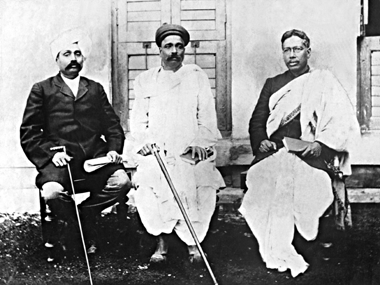Lal-Bal-Pal on:
[Wikipedia]
[Google]
[Amazon]
 Lal Bal Pal (
Lal Bal Pal (
 Lal Bal Pal (
Lal Bal Pal (Lala Lajpat Rai
Lala Lajpat Rai (28 January 1865 — 17 November 1928) was an Indian revolutionary, politician, and author, popularly known as ''Punjab Kesari (Lion of Punjab).'' He was one of the three members of the Lal Bal Pal trio. He died of severe tra ...
, Bal Gangadhar Tilak
Bal Gangadhar Tilak (; born Keshav Gangadhar Tilak (pronunciation: eʃəʋ ɡəŋɡaːd̪ʱəɾ ʈiɭək; 23 July 1856 – 1 August 1920), endeared as Lokmanya (IAST: ''Lokamānya''), was an Indian nationalist, teacher, and an independence ...
, and Bipin Chandra Pal) were a triumvirate
A triumvirate () or a triarchy is a political institution ruled or dominated by three individuals, known as triumvirs (). The arrangement can be formal or informal. Though the three leaders in a triumvirate are notionally equal, the actual distr ...
of assertive nationalists in British India
The provinces of India, earlier presidencies of British India and still earlier, presidency towns, were the administrative divisions of British governance in South Asia. Collectively, they have been called British India. In one form or another ...
in the early 20th century, from 1906 to 1918. They advocated the Swadeshi movement
The Swadeshi movement was a self-sufficiency movement that was part of the Indian independence movement and contributed to the development of Indian nationalism. Before the BML Government's decision for the partition of Bengal was made public i ...
involving the boycott of all imported items and the use of Indian-made goods in 1907 during the anti-Partition agitation in Bengal
Bengal ( ) is a Historical geography, historical geographical, ethnolinguistic and cultural term referring to a region in the Eastern South Asia, eastern part of the Indian subcontinent at the apex of the Bay of Bengal. The region of Benga ...
which began in 1905. They were also known as the "Radicals of The Indian Independence Movement".
The final years of the nineteenth century saw a radical sensibility emerge among some Indian intellectuals. This position burst onto the national all-India scene in 1905 with the Swadeshi movement
The Swadeshi movement was a self-sufficiency movement that was part of the Indian independence movement and contributed to the development of Indian nationalism. Before the BML Government's decision for the partition of Bengal was made public i ...
- the term is usually rendered as "self reliance" or "self sufficiency".Erez Manela, The Wilsonian moment: self-determination and the international origins of anticolonial nationalism, Published by Oxford University Press US, 2007, ,
Lal Bal Pal mobilised Indians across the country against the Bengal partition, and the demonstrations, strikes, and boycotts of British goods that began in Bengal soon spread to other regions in a broader protest against the Raj.
The nationalist movement gradually faded with the arrest of its main leader Bal Gangadhar Tilak
Bal Gangadhar Tilak (; born Keshav Gangadhar Tilak (pronunciation: eʃəʋ ɡəŋɡaːd̪ʱəɾ ʈiɭək; 23 July 1856 – 1 August 1920), endeared as Lokmanya (IAST: ''Lokamānya''), was an Indian nationalist, teacher, and an independence ...
and retirement of Bipin Chandra Pal and Aurobindo Ghosh from active politics. While Lala Lajpat Rai
Lala Lajpat Rai (28 January 1865 — 17 November 1928) was an Indian revolutionary, politician, and author, popularly known as ''Punjab Kesari (Lion of Punjab).'' He was one of the three members of the Lal Bal Pal trio. He died of severe tra ...
suffered from injuries, due to police superintendent James A. Scott's decision to order the policemen under his command to ''lathi'' (baton) charge a crowd Rai was in and personally assaulted Rai; he died on 17 November 1928 due to the injuries sustained in lathi charge.
References
{{reflist Indian independence movement in Maharashtra Memorials to Bal Gangadhar Tilak Memorials to Lala Lajpat Rai